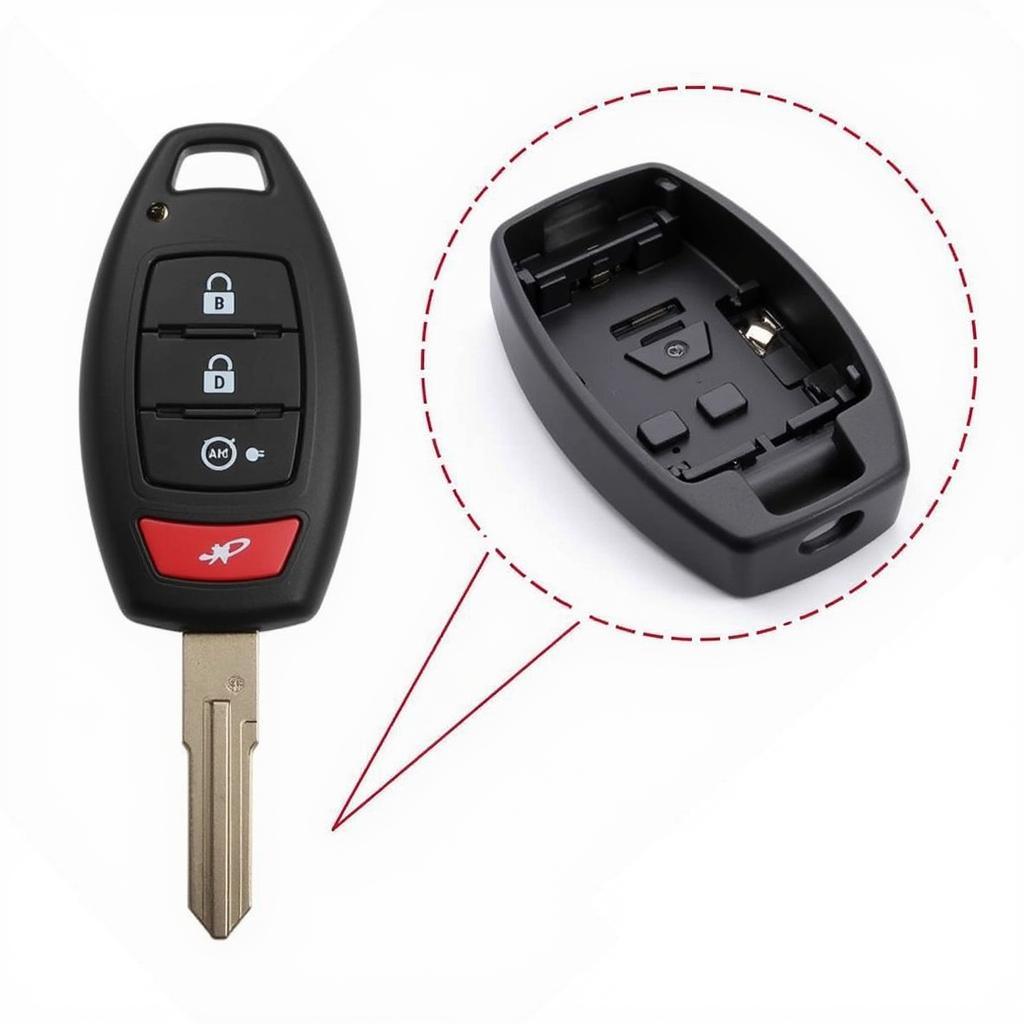If you’re asking yourself, “does my Civic warn of brakes work?”, you’re not alone. Many Honda Civic owners want to understand how their car communicates potential brake issues. Your car’s braking system is incredibly complex and vital for safety. While brake problems can be unsettling, your Civic is equipped with several warning systems designed to alert you to potential issues before they become serious.
This article will explore those warning signs, explain what they mean, and guide you on the appropriate steps to take if you encounter them.
Understanding Your Civic’s Brake Warning Lights
The most obvious way your Civic tells you about brake problems is through warning lights on your dashboard. Let’s break down the most common ones:
- Brake System Warning Light: This light typically looks like an exclamation point (!) inside a circle and enclosed by parentheses. When illuminated, it can indicate several things:
- Parking Brake Engaged: The most common reason this light comes on is that your parking brake is not fully released. Double-check your parking brake lever.
- Low Brake Fluid: This light also serves as a low brake fluid level warning. Brake fluid is crucial for transmitting force from your foot to the brake calipers, so a low level could signal a leak.
- Brake System Malfunction: In some cases, this light can indicate a more serious problem within the braking system itself, like an issue with the ABS control module or a faulty wheel speed sensor.
- Anti-lock Braking System (ABS) Light: The ABS light usually says “ABS” and illuminates when there’s a problem with your anti-lock braking system. While your regular brakes may still function, the ABS might not engage during hard braking, potentially leading to wheel lockup and skidding.
- Vehicle Stability Assist (VSA) Light: This light, often represented by a car with skid marks, indicates a problem with your Civic’s electronic stability control system, which helps maintain traction and control during cornering and slippery conditions. While not directly related to the brakes themselves, the VSA system often works in conjunction with the ABS, and a malfunction in one could signal an issue with the other.
Beyond the Dashboard: Other Signs of Brake Problems
While your Civic’s warning lights are helpful, they aren’t the only way to detect potential brake issues. Pay attention to these additional signs:
- Squealing or Grinding Noises: High-pitched squealing can indicate worn brake pads, while a grinding metal-on-metal sound usually means your brake pads are completely worn, and the metal backing plate is rubbing against the rotor.
- Vibrations When Braking: If you feel pulsations or vibrations through the brake pedal or steering wheel when applying the brakes, it could indicate warped brake rotors.
- Pulling to One Side: If your Civic pulls to one side when braking, it could indicate uneven brake pad wear, a sticking caliper, or a problem with the hydraulic system.
- Soft or Spongy Brake Pedal: A soft or spongy brake pedal that goes closer to the floor than usual can indicate air in the brake lines or a problem with the master cylinder.
What to Do When Your Civic Warns You
If you encounter any of the warning signs mentioned above, it’s essential to address the issue promptly. Here’s a step-by-step guide:
- Assess the Situation: What warning lights are on? Are there any unusual sounds or sensations when braking? Understanding the specific symptoms can help you determine the severity of the problem.
- Check the Obvious: If the brake system warning light is on, ensure your parking brake is fully released.
- Consult Your Owner’s Manual: Your Civic’s owner’s manual provides valuable information about warning lights and recommended actions.
- Seek Professional Help: If you suspect a problem beyond a disengaged parking brake or if the issue persists, it’s best to take your Civic to a qualified mechanic specializing in Honda vehicles.
“Ignoring brake problems is like playing with fire,” says John Smith, a seasoned Honda mechanic with over 20 years of experience. “Addressing them early can save you from costly repairs and potentially dangerous situations down the road.”
Remote Diagnostics and Software Solutions: The Future of Car Repair
Advancements in automotive technology have led to innovative solutions for diagnosing and even repairing car problems remotely. Remote diagnostics allow mechanics to access your Civic’s onboard computer system wirelessly, retrieve diagnostic trouble codes, and identify potential issues without even being physically present.
In some cases, software updates or recalibrations can be performed remotely to address certain brake system problems. This technology is particularly useful for addressing issues related to the ABS, VSA, and other electronic components within the braking system.
driving with brake warning light on can be dangerous and lead to further damage.
Conclusion
Your Honda Civic is equipped with sophisticated systems to alert you to potential brake issues. Understanding these warning signs and taking prompt action is crucial for ensuring your safety and the longevity of your vehicle. Regular maintenance, including brake inspections and fluid flushes, can help prevent many common problems and keep your Civic’s braking system in optimal condition. If you experience any warning signs or have concerns about your brakes, don’t hesitate to seek professional assistance.


